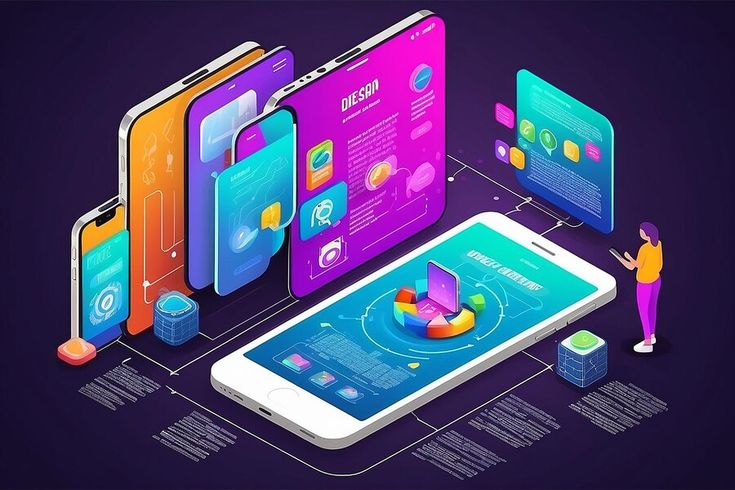Transforming Testing with AI-Driven Insights
Software development in the modern era has changed in tandem with technological improvements. Traditional manual testing in the realm of technology is no longer an effective method for verifying software quality. Organisations can now release applications more quickly without compromising quality, thanks to artificial intelligence (AI).
By offering more effective techniques for creating data and test cases, AI testing has taken over the QA testing process. Artificial intelligence utilising machine learning techniques can automatically find flaws, performance issues, and bugs in software, improving speed and accuracy.
In this article, we will understand what AI-driven testing is and how AI-driven insights transform the next era of software testing approach. We will cover some tips that will also help in better utilising AI-driven insights to overcome the challenges encountered in transforming testing.
Understanding AI-Driven Test Insights
AI has the potential to improve software testing’s efficacy, efficiency, and dependability. AI-based insights make it possible to test and optimise several parts of the software development life cycle. The capabilities of machine learning, natural language processing, and other artificial intelligence-based technologies are combined in AI-based tools.
AI-powered test insights aid in detecting and predicting software errors, improving the accuracy and comprehensiveness of the testing procedure. They save time and effort by automatically creating test cases, running tests, and analysing outcomes. The majority of traditional test automation techniques require coding knowledge. Organizations simply cannot use these technologies without a decade of training, even though they have technically skilled testers.
In practice, these technologies need a close collaboration of skilled professionals who know how to write code. This implies that implementing an automated testing strategy takes more time and more resources.
Challenges in Traditional Test Automation
Traditional test automation procedures identify elements using static element characteristics such as ID, Name, Class, Xpath, Tag Name, and CSS selector. This is difficult since software contains dynamic attributes. This complicates the fixing of test failures that are caused by even small changes to the user interface or back-end.
Furthermore, when code-based test automation expands over time, it becomes unmaintainable. It is a lengthy and challenging procedure for new team members to learn about the scripts from the developers who created them. Since it is difficult to copy or distribute scripts, organisations are excessively dependent on those who write them. Although software testing is made more efficient by standard test automation technologies, there is no assurance that the tool offers sufficient test coverage. Development teams usually require lengthy sessions to describe their processes and perform tests.
Because of this, most of the organisations put their applications at risk by performing excessive testing, wasting both time and resources. Teams may cover a greater area with fewer errors and with less effort when using AI in software testing. The use of AI in testing makes it faster and more practical.
How AI-Driven Insights Transform Testing
Improved test coverage- Complex test cases can be generated using AI. They can cover a wide range of scenarios that are impossible to imagine manually, including edge cases and incorrect input data. AI tools employ self-learning algorithms so that testers can enhance the test coverage methodically.
AI tools provide a broad integration capability- AI-based tools can be integrated with nearly all project platforms. They perform exceptionally well, for instance, when combined with GitHub, the Jenkins continuous integration service, or the Jira bug tracking system.
Continuous learning and development- Various self-learning algorithms are at the core of AI-based testing. They evaluate the development of the application while testing. Later, it is taken into consideration by artificial intelligence algorithms to test input data in the future. The precision and efficacy of AI tests, therefore, frequently outperform those conducted on traditional methods.
Predicting Defects- AI can identify aspects of software that are prone to malfunction by analysing past test results and coding trends. AI in automation testing will identify the high-risk area before the next release if previous changes have resulted in failures.
Predictive Maintenance- AI can ensure that the software functions properly over time, in addition to identifying and predicting flaws. It keeps an eye on performance and alerts developers about possible lags or errors before users become aware of them. Consider it as a software fitness tracker that continually stays in its optimal state.
Prediction for Remaining Useful Life (RUL)- The components of software weaken with time in the same way that machines can. AI can predict how long a software feature will last before requiring an upgrade in quality assurance. This enables organisations to schedule maintenance without waiting for problems to arise.
AI-powered Code Review and Test Automation- AI-powered automated test case generation reduces testing time by eliminating the need for testers to carry out tedious tasks. Similar to how skilled developers evaluate various code bases, AI techniques analyse application code for performance issues. AI’s ability to identify features that impact application performance results in recommendations for performance optimisation that reduce operating time and resource consumption.
Analysing User Feedback- By evaluating real feedback from users, AI continues to enhance the software even after it has been deployed. It may associate user complaints with back-end data to determine the underlying problem if users frequently complain about crashes or delayed load times. With each update, it guarantees an improved user experience.
What Are the Key AI-Driven Capabilities for Software Testing
- Faster and More Efficient Testing- Because testers have to create cases for execution and then evaluate the outcomes, the traditional testing approach causes delays. AI testing automates the entire process, executing numerous test cases far more quickly than a human can. It expedites the testing of all essential elements, without requiring human testers to perform tedious tasks.
- Self-Healing Test Scripts- Testing with AI capabilities may create test scripts that automatically adjust to alterations in the software code. This ensures automated tests remain reliable and up to date. The AI automatically adapts the test script to the new conditions when a test fails because of code changes. By eliminating the need to manually update test scenarios, teams can ensure dependability even in complicated development environments. AI testing tools offer highly accurate results by ensuring test execution and boosting test coverage.
- Optimising Test Execution with Predictive Analytics- Optimising test execution is one of the main responsibilities of AI-based testing solutions. Predictive analytics evaluates past data to identify trends and determine the probability that particular tests will fail.
- Improved Accuracy- Even the most proficient testers can overlook something during the testing process due to carelessness, incorrect data input, or a lack of recognition of system alerts. Because of their ability to minimise human errors, accurate AI algorithms can detect inaccurate data that a human testing team can overlook.
- AI-Powered Test Data Generation- AI in QA automation provides huge test data patterns based on real user behaviour. This strategy secures testing under all potential scenarios, even unexpected ones.
- Real-Time Quality Validation- AI technology can support continuous testing by integrating with the CI/CD pipeline. This approach allows new codes to be tested instantly, reducing the possibility of faulty code reaching the deployment stage.
- Cost Reduction- Implementing AI in test automation reduces reliance on manual testers, leading to lower costs and faster operations. Organisations can use a human workforce for more advanced tasks while AI systems execute repetitive testing tasks. This increase in output enables organisations to increase efficiency and reduce expenses.
Tips for Better Utilising AI-Driven Insights
Investing in AI to Reduce Initial Implementation Costs
AI in test automation requires organisations to invest in infrastructure and tools, as well as employee training. Organisations have to evaluate the potential benefits of faster testing times, increased precision, and implementation considerations. Organisations’ costs gradually decrease as AI is adopted.
Filling Knowledge and Skill Gaps for AI Adoption
Automated test orchestration, AI algorithms, and machine learning models could be unfamiliar to traditional testers. Organisations must engage in upskilling testers to help them migrate to AI-augmented activities instead of replacing them to close this gap.
AI Algorithm for Preserving Test Result Accuracy
For AI systems to work at their best, their training data is essential. Because of faulty training data, AI in automation testing sometimes finds problems that do not exist (false positives) and skips important issues.
Safely Managing Sensitive Testing
Data that AI testing generally requires correct user data, which poses security and compliance issues. AI in test automation should also be able to encrypt and anonymise, and comply with regulations such as the CCPA and the GDPR to help preserve sensitive data.
Future of AI-Driven Insights in Transforming Testing
Future advancements in AI-powered test insights will lead to a remarkable expansion in testing procedures. By leveraging AI to organise test operations and enabling testers to concentrate on key decisions, they will radically transform the process.
The Function of AI in Autonomous Testing and Hyperautomation
The hyper automation that integrates AI, ML, and RPA will make fully autonomous testing possible. AI-driven insights will develop, execute, identify, and even fix test cases without human aid, ensuring faster delivery of software.
AI-driven Test Orchestration Platforms
AI will decide which tests to run, prioritise the most severe defects, and allocate resources optimally in the future. By offering real-time analytics, these platforms will shorten time-to-market. One such platform is LambdaTest, which leverages real-time analytics powered by AI to offer a proactive method of software testing. This strategy helps improve efficiency, quality, and speed of release and reduces the overall time-to-market of applications.
Teams are increasingly turning to AI testing tools that provide predictive insights, reduce flaky tests, and accelerate root cause analysis. LambdaTest enhances this shift by combining intelligent reporting with scalable execution, making testing more adaptive.
LambdaTest is one such AI testing tool that can conduct both manual and automated tests at scale. The platform allows for the execution of automated and manual testing in real-time on over 3000 environments and real mobile devices.
LambdaTest’s KaneAI, a GenAI-native QA assistant, helps generate, debug, and evolve tests in plain language. It is designed to improve and expedite each step of the QA process, assisting testing teams in increasing test coverage, identifying problems early, and improving overall software quality and efficiency.
AI Will Change Human Oversight and QA Job Roles
AI will redefine QA roles rather than replace them. Testers will conduct higher-value work such as the creation of test strategies, training of AI models, and the monitoring of ethical AI. Human oversight will still be required in dealing with edge cases, detection of bias, and making critical decisions.
Conclusion
In conclusion, AI’s capacity to identify problems and enhance application performance in test automation has raised software reliability. Its implementation in testing techniques has currently become vital because its benefits outweigh its remaining drawbacks, which include cost and data security concerns.
In short, AI-driven insights are simplifying and speeding up the testing process in today’s Agile projects. AI solutions are capable of operating on huge datasets, complex testing scenarios, and are adaptable to different testing approaches on various devices. AI-driven testing has reported higher application quality, fewer errors, and quicker QA workflows.



